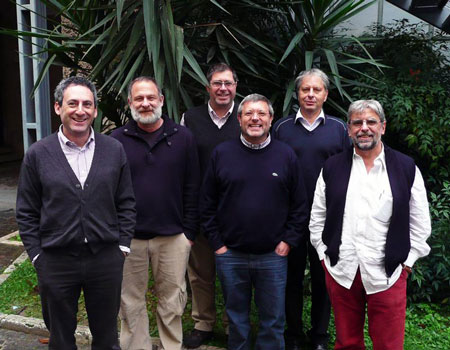| Dec 01, 2010 |
New EU project CORONET: Novel interfaces between brain and computer
|
|
(Nanowerk News) Interfaces between the brain and electrical circuits in technical devices or computers open new perspectives for basic research and medical application, e.g., for therapeutic brain stimulation and neuroprosthetics. The new EU project CORONET will develop the technological and theoretical foundations for such future "bio-hybrid" interfaces between biological and artificial nervous tissues.
|
|
The European Commission supports CORONET with 2.7 Mio. € from the 7th Framework Program. Within the category "Brain-inspired Computing", CORONET received the best rating out of all 39 concurring project proposals.
The key idea of CORONET is to work with, not against, the complex spontaneous activity of living nervous tissues. The project will first "gently steer" the spontaneous activity into a desired direction by applying continuous, weak electrical stimulation. Then, the nervous tissue will be coupled to artificial, electronic networks that show a behavior as complex as that of the living brain. By aid of this coupling, the scientists will try to "read out" natural, spontaneously arising activity states in the nervous tissue.
|
 |
| Collaborators in the CORONET EU project (from left to right): Mathew Diamond (SISSA, Trieste), Shimon Marom (Technion, Haifa), Jochen Braun (Otto-von-Guericke University Magdeburg), Gustavo Deco (Uuniversity Pompeu Fabra, Barcelona), Rene Schüffny (Technical University Dresden), Paolo Del Giudice (Instituto Superiore di Sanità, Rome).
|
|
In a first step, computer simulations will serve as artificial neural networks. In a second step, the researchers will apply custom-built advanced integrated circuits that operate based on principles of the brain ("neuromorphic VLSI"). The final goal of the project is to seamlessly interface "silicon-" and living nervous tissues.
|
|
The project involves senior scientists from Magdeburg, Dresden, Trieste, Rome, Haifa, and Barcelona and is led by Prof. Jochen Braun (Otto-von-Guericke Universität Magdeburg). It builds on previous research performed in the Bernstein Group Magdeburg, coordinated also by Prof. Braun and funded by the German Federal Ministry of Education and Research (BMBF).
|

